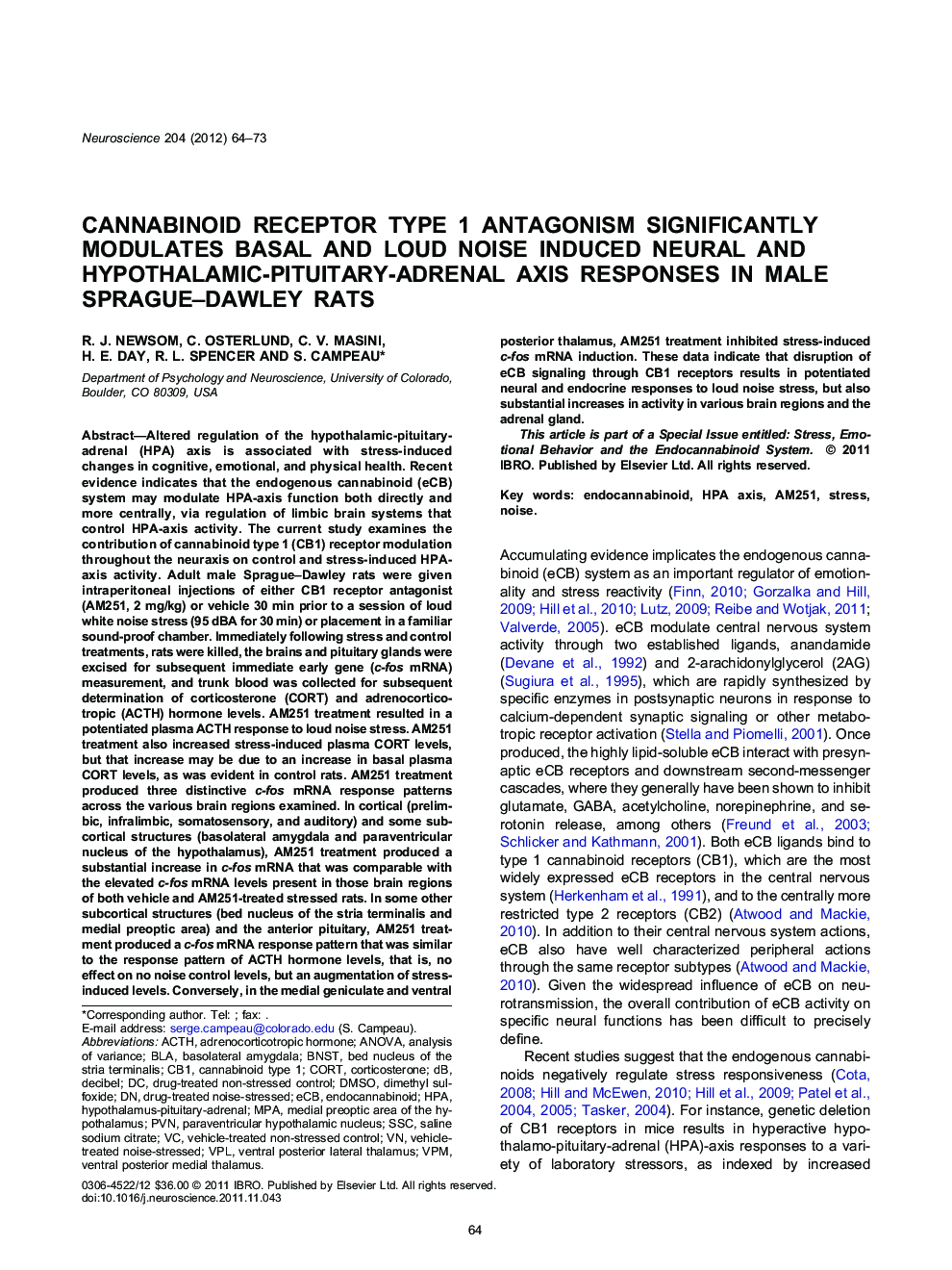| کد مقاله | کد نشریه | سال انتشار | مقاله انگلیسی | نسخه تمام متن |
|---|---|---|---|---|
| 4338609 | 1614872 | 2012 | 10 صفحه PDF | دانلود رایگان |

Altered regulation of the hypothalamic-pituitary-adrenal (HPA) axis is associated with stress-induced changes in cognitive, emotional, and physical health. Recent evidence indicates that the endogenous cannabinoid (eCB) system may modulate HPA-axis function both directly and more centrally, via regulation of limbic brain systems that control HPA-axis activity. The current study examines the contribution of cannabinoid type 1 (CB1) receptor modulation throughout the neuraxis on control and stress-induced HPA-axis activity. Adult male Sprague–Dawley rats were given intraperitoneal injections of either CB1 receptor antagonist (AM251, 2 mg/kg) or vehicle 30 min prior to a session of loud white noise stress (95 dBA for 30 min) or placement in a familiar sound-proof chamber. Immediately following stress and control treatments, rats were killed, the brains and pituitary glands were excised for subsequent immediate early gene (c-fos mRNA) measurement, and trunk blood was collected for subsequent determination of corticosterone (CORT) and adrenocorticotropic (ACTH) hormone levels. AM251 treatment resulted in a potentiated plasma ACTH response to loud noise stress. AM251 treatment also increased stress-induced plasma CORT levels, but that increase may be due to an increase in basal plasma CORT levels, as was evident in control rats. AM251 treatment produced three distinctive c-fos mRNA response patterns across the various brain regions examined. In cortical (prelimbic, infralimbic, somatosensory, and auditory) and some subcortical structures (basolateral amygdala and paraventricular nucleus of the hypothalamus), AM251 treatment produced a substantial increase in c-fos mRNA that was comparable with the elevated c-fos mRNA levels present in those brain regions of both vehicle and AM251-treated stressed rats. In some other subcortical structures (bed nucleus of the stria terminalis and medial preoptic area) and the anterior pituitary, AM251 treatment produced a c-fos mRNA response pattern that was similar to the response pattern of ACTH hormone levels, that is, no effect on no noise control levels, but an augmentation of stress-induced levels. Conversely, in the medial geniculate and ventral posterior thalamus, AM251 treatment inhibited stress-induced c-fos mRNA induction. These data indicate that disruption of eCB signaling through CB1 receptors results in potentiated neural and endocrine responses to loud noise stress, but also substantial increases in activity in various brain regions and the adrenal gland.This article is part of a Special Issue entitled: Stress, Emotional Behavior and the Endocannabinoid System.
▶Antagonism of CB1 receptors potentiated neural and endocrine responses to loud noise stress. ▶AM251 administration alone also increased activity in various brain regions and the pituitary-adrenal system. ▶AM251 inhibited neural response to loud noise stress in the VP nucleus and MGN of the thalamus.
Journal: Neuroscience - Volume 204, 1 March 2012, Pages 64–73